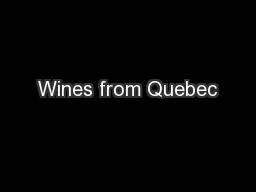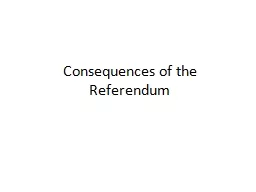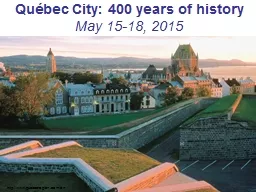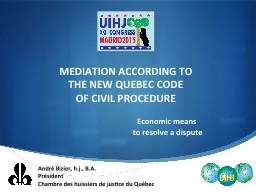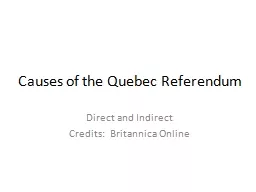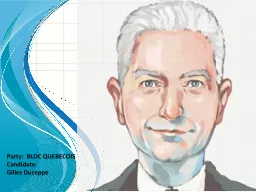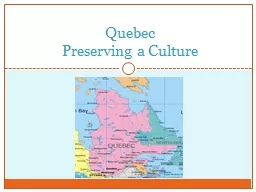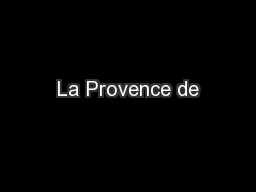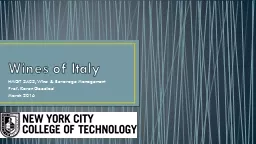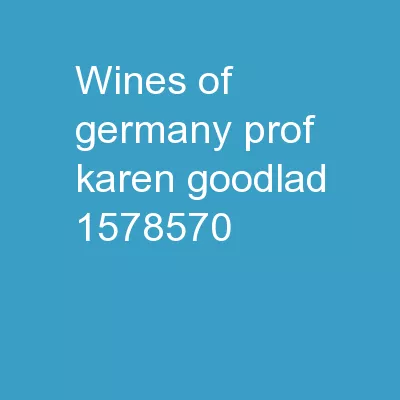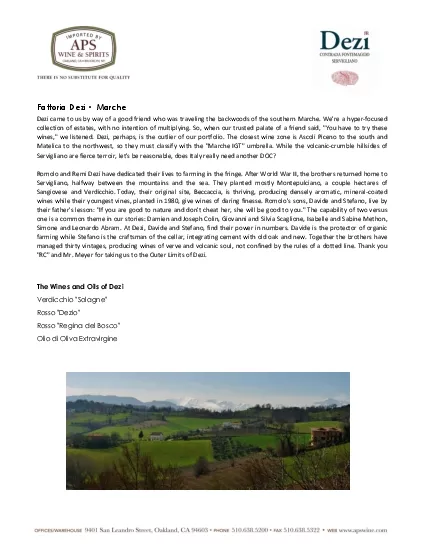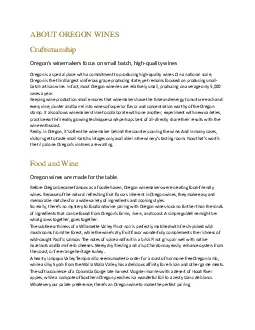PPT-Wines from Quebec
Author : min-jolicoeur | Published Date : 2017-05-14
Presented by Maryanne and Bill Pilotte March 20 2016 Thank You Silver Coast Future Chapter Events Mar 28 th Tuscan Wine Dinner at Angelos in support of the Museum
Presentation Embed Code
Download Presentation
Download Presentation The PPT/PDF document "Wines from Quebec" is the property of its rightful owner. Permission is granted to download and print the materials on this website for personal, non-commercial use only, and to display it on your personal computer provided you do not modify the materials and that you retain all copyright notices contained in the materials. By downloading content from our website, you accept the terms of this agreement.
Wines from Quebec: Transcript
Presented by Maryanne and Bill Pilotte March 20 2016 Thank You Silver Coast Future Chapter Events Mar 28 th Tuscan Wine Dinner at Angelos in support of the Museum of Coastal Carolina . Lake Erie Lake Ontario Still a large group of unsatisfied Quebecers. Since . Canada's constitution was repatriated without Quebec's . consent in 1982, . later initiatives would seek to improve the constitutional . status quo. May 15-18, 2015. http://www.quebecregion.com/en. Agenda. Introductions. Why travel to Québec?. Expectations. Immersion Tours. Itinerary. Price & Financial help. Next steps. Introductions. Please . OF . CIVIL PROCEDURE . Economic. . means. . to . resolve. a dispute. André Bizier, . h.j. ., B.A.. . Président . Chambre des huissiers de justice du Québec. MEDIATION ACCORDING TO THE NEW QUEBEC . Direct and Indirect. Credits: Britannica Online. DIRECT CAUSE. Rene. . Levesque . was elected the first leader of the . Parti. . Quebecois (PQ), was . dedicate to a split from Canada in the form of a relationship known as sovereignty association.. Candidate: . Gilles Duceppe . 1. . . Block . Quebecois. 2. .Brief introduction of the candidate. BORN:. JULY 22, 1947. RIDING:. LAURIER—SAINTE-MARIE. EDUCATION:. POLITICAL SCIENCE, UNIVERSITÉ DE . ECOSYSTEMS. • NOT ONLY A LAND OF LAKES AND RIVERS. . - HAS FORESTS IN SOUTHERN REGIONS . • QUEBECERS HAVE HARVEST ALL KINDS OF RESOURCES. . - SOFTWOOD. . - HARDWOOD . . . Preserving a Culture. Quebec. 1977 all street signs had to be in French, now they are in both English and French. Government, commerce, and education in Quebec only uses French. 83% of Quebec is French speaking; 12% is English; 5% speak other languages. QuÉbec. Bellwork – Jeudi, le 3 . novembre. If you were to travel to Quebec, what would be your top three reasons for going? Why?. QuÉbec. Population:. Over 7 million. Cities: . Montreal, Quebec, Laval. Standards. SS6H5 The student will analyze important contemporary issues in Canada. . a. Describe Quebec’s independence movement.. Province of Quebec. Quebec is located in eastern Canada.. A large part of Canadian industry is centered in Quebec.. Prof. Karen Goodlad. March . 2016. What to . Expect . T. oday. Review . Retail . Assignment. Review . W. inery Assignment. Session Objectives. Discuss . wine making methods using wine industry terminology. HMGT 2402. Spring . 2015. Learning Objectives. Discuss . wine making methods using wine industry . terminology.. Explain . the factors that affect the taste of . German wine:. ``Identify the grape varieties of Germany. Verdicchio SolagneRosso DezioRosso Regina del BoscoOlio di Oliva Extravirgine Fattoria Dezi MarcheDezicametousbywayofagoodfriendwhowastravelingthebackwoodsofthesouthernMarcheWereahyper-focusedcollect CraftsmanshipOregons winemakers focus on small batch high-quality winesOregon is a special place with a commitment to producing high-quality wines On a national scale Oregon is the third largest vinif
Download Document
Here is the link to download the presentation.
"Wines from Quebec"The content belongs to its owner. You may download and print it for personal use, without modification, and keep all copyright notices. By downloading, you agree to these terms.
Related Documents

